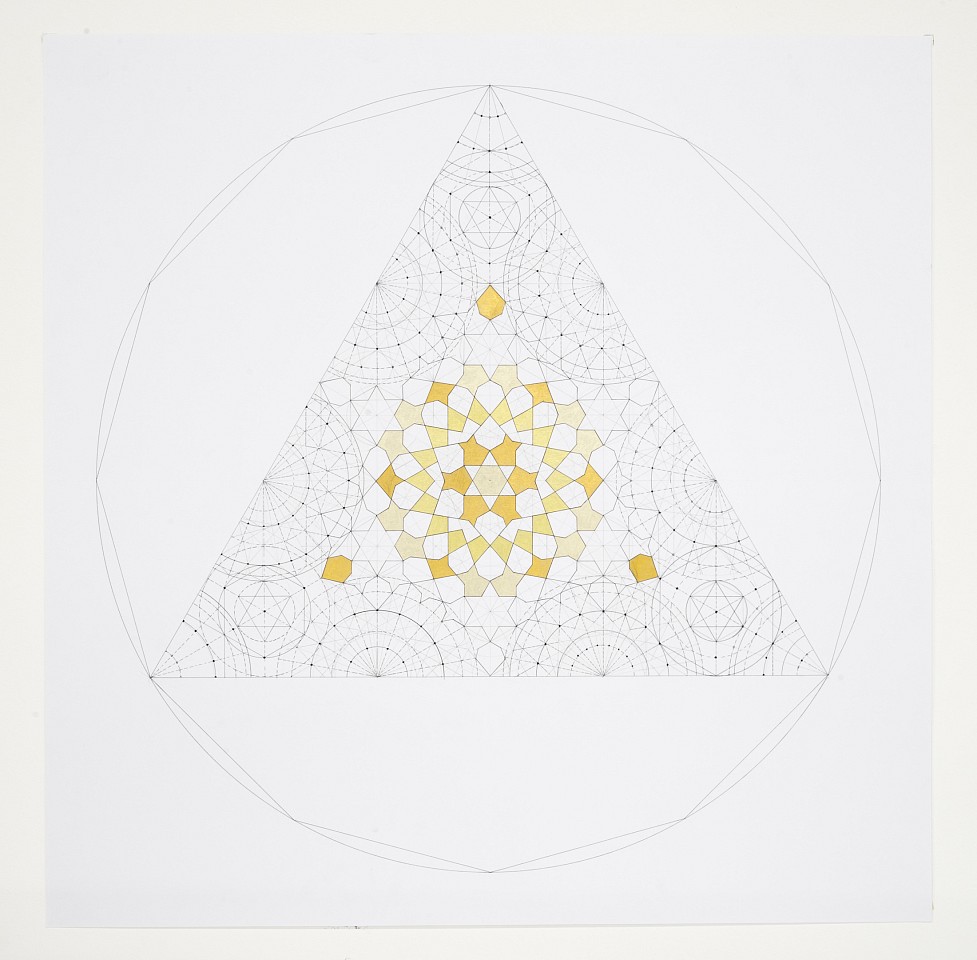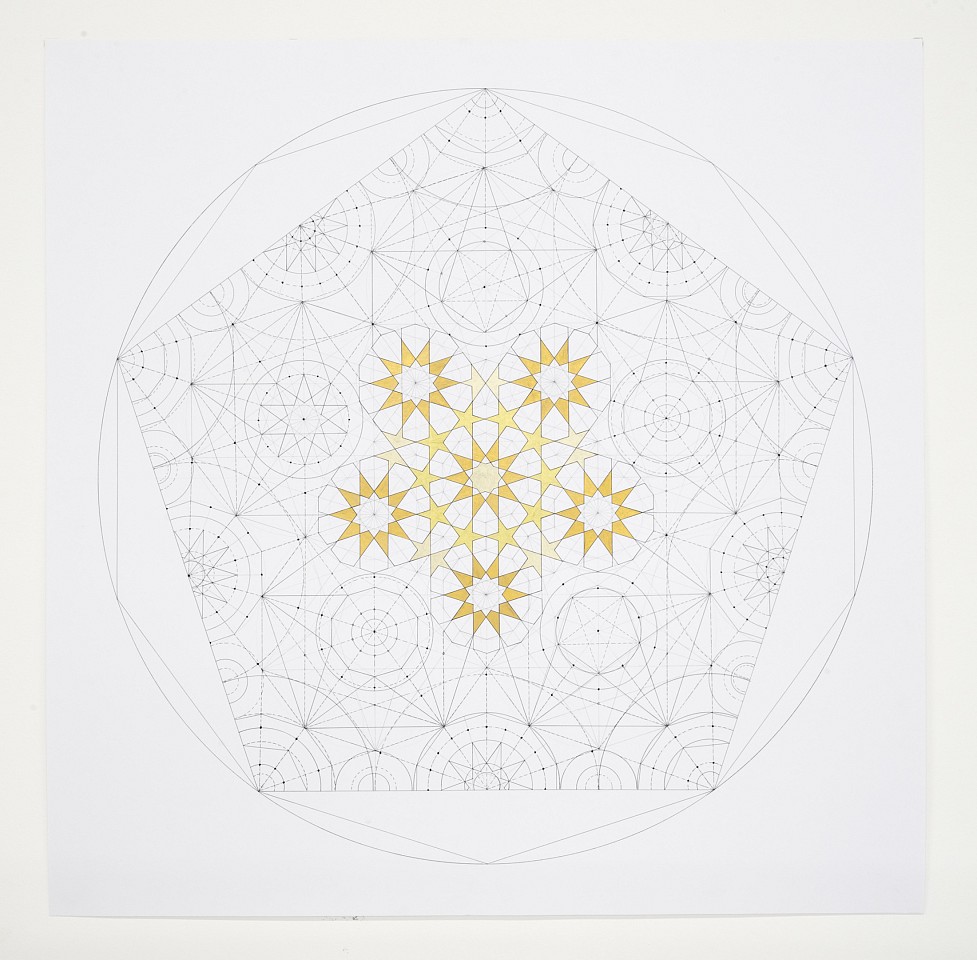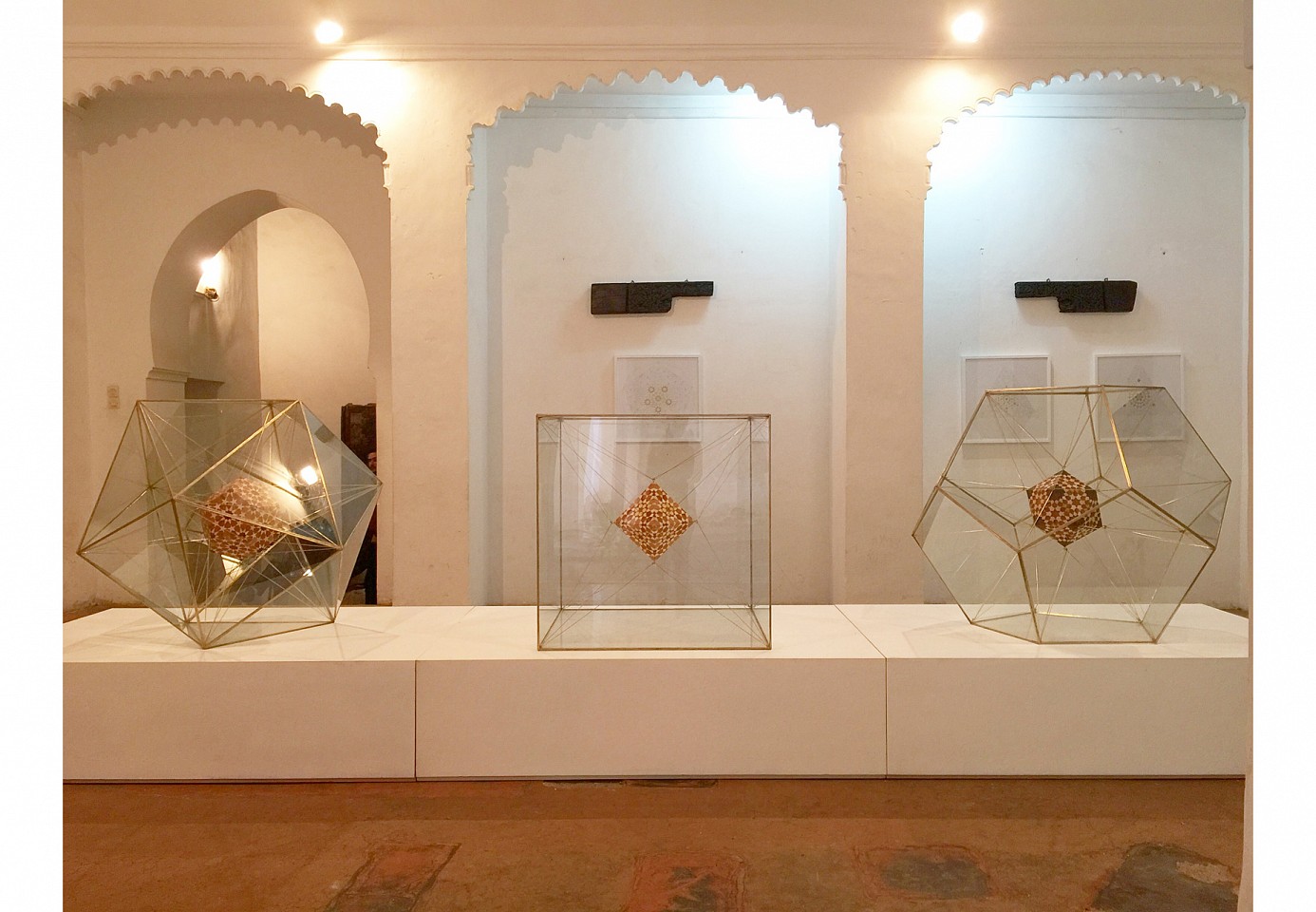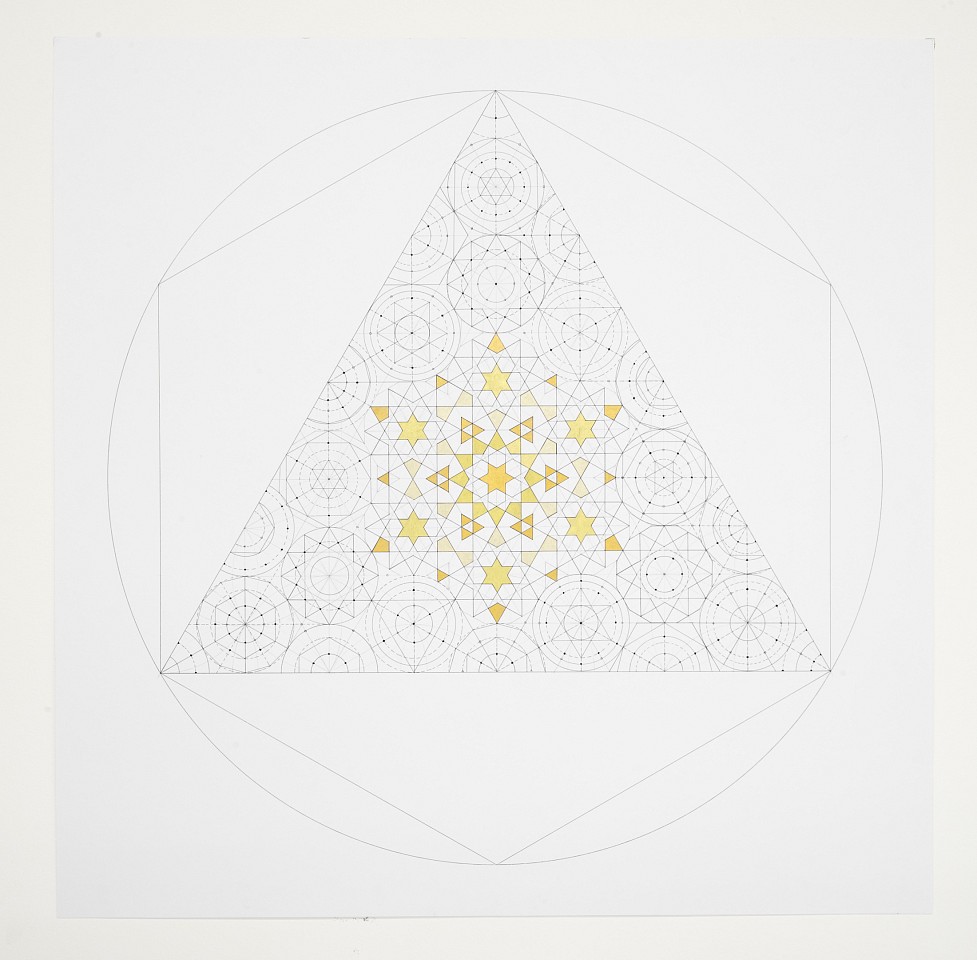Dana Awartani
Dodecahedron Within a Icosahedron from The Platonic Solid Duals Series, 2016
Shell gold and gouache on paper
54 x 54 cm
Dana Awartani
Dodecahedron Within a Icosahedron from The Platonic Solid Duals Series, 2016
Shell gold and gouache on paper
54 x 54 cm
Dana Awartani
From left to right: Dodecahedron Within an Icosahedron, Octahedron Within a Cube & Icosahedron within a Dodecahedron from The Platonic Solid Duals Series, 2016
Shell gold and ink on paper
DAN0112
Dana Awartani
Octahedron Within a Cube from The Platonic Solid Duals Series, 2016
Shell gold and ink on paper
DAN0114




Awartani has created a series of sculptures and drawings based on the Platonic Solids, an ancient study of shapes based on Euclidean geometry.
The platonic solids are the most frequently studied shapes in history. They have been around for thousands of years and geometers have studied their mathematical properties and been fascinated by their inherent beauty and symmetry. What makes them particularly important is that they are considered as the only five ‘perfect’ shapes in three-dimensional space that derive from a sphere. They appear the same from any vertex, their faces are made of the same regular shape, and their vertices represent the most symmetrical distribution of the numbers four, six, eight, twelve and twenty on a sphere.
Awartani has taken direct inspiration from these forms and has translated these three-dimensional shapes into sculptures that examine the dual properties that they share, as each polyhedron has a dual or ‘polar’ polyhedron with faces and vertices interchanged, which is also known as polar reciprocation. By this duality principle each platonic solid has a pair that fit within each other in geometric harmony.
Plato has furthermore attributed the four classical elements (earth, air, fire, water) and the heavens to each shape, based on intuitive justification for these associations. Awartani has taken these principles and translated it in her choice of material, as wood is the only substance that needs all the elements to survive in nature.










